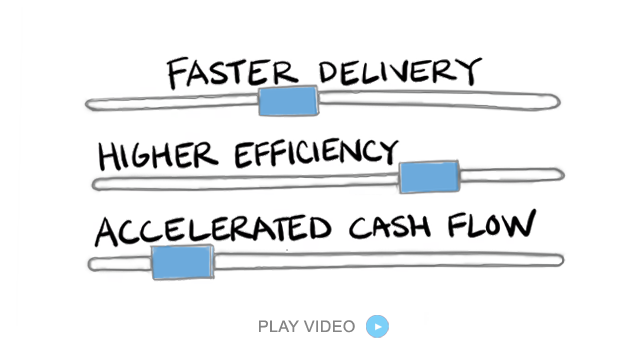Meeting Increased Demand with a Decreased Labor Force
Pharmaceutical manufacturing is facing a dual challenge: increasing demand for products driven by global health needs and a tightening labor market. For Operations Directors, this creates a pressing need to adapt processes to maintain productivity and efficiency while grappling with reduced manpower.
The solution lies in leveraging advanced technologies and integrating tools like PlanetTogether with systems such as SAP, Oracle, Microsoft, Kinaxis, or Aveva to optimize resources and streamline operations.
This blog explores how pharmaceutical manufacturers can meet heightened demand without compromising on quality, compliance, or operational efficiency.

The Labor Market Challenge
The pharmaceutical industry, known for its stringent regulations and complex processes, requires a skilled workforce to ensure compliance and maintain product quality. However, the global labor shortage—driven by factors like aging populations, shifting career preferences, and the aftermath of the COVID-19 pandemic—has created significant hiring and retention challenges.
Key Statistics:
According to a recent industry report, the global pharmaceutical manufacturing sector is projected to grow at a CAGR of 12.8% through 2030.
However, workforce participation rates in manufacturing roles have declined by over 15% in the past decade.
This dichotomy—rising demand against a backdrop of a shrinking workforce—necessitates a reimagining of operational strategies.
![]()

The Role of Advanced Planning and Scheduling (APS) Systems
Integrating advanced planning and scheduling (APS) systems like PlanetTogether with enterprise solutions such as SAP or Oracle is critical in addressing these challenges. APS systems are designed to optimize production schedules, balance workloads, and allocate resources effectively—all of which are crucial in a labor-constrained environment.
Key Benefits:
Dynamic Resource Allocation: APS systems analyze real-time data to ensure optimal use of available workforce and equipment.
Scenario Planning: Operations Directors can simulate various production scenarios, accounting for labor shortages, to identify the most efficient workflow.
Seamless Integration: Integrating PlanetTogether with SAP or Oracle enables synchronized data flow between planning, production, and inventory management systems.
Example: A pharmaceutical facility integrating PlanetTogether with SAP saw a 20% improvement in on-time delivery rates, despite a 10% reduction in available labor.

Leveraging Automation to Offset Labor Shortages
Automation is another cornerstone of meeting increased demand with a reduced labor force. By automating repetitive tasks, pharmaceutical manufacturers can free up skilled workers for more critical operations while maintaining production efficiency.
Key Areas for Automation:
Batch Manufacturing: Automating batch processes ensures consistency and reduces manual intervention.
Quality Control: Automated testing and monitoring systems can accelerate quality assurance processes while ensuring compliance.
Material Handling: Robotics and automated guided vehicles (AGVs) streamline inventory management and reduce reliance on human labor.
Integration Highlight:
Combining PlanetTogether with systems like Kinaxis or Aveva allows for predictive analytics and automation planning, ensuring that automated systems align with overall production goals.

Enhancing Workforce Productivity with Digital Tools
While automation and APS systems help offset labor shortages, enhancing the productivity of the existing workforce is equally important. Digital tools play a pivotal role in empowering workers to perform at their best.
Key Tools:
Augmented Reality (AR): AR-assisted maintenance tools provide real-time guidance, reducing downtime and enabling less experienced staff to perform complex tasks.
Digital Twins: Simulating production processes with digital twins, powered by integrations with Microsoft or Aveva, allows for real-time troubleshooting and optimization.
Collaboration Platforms: Integrating APS systems with Microsoft Teams or similar platforms fosters communication and ensures all stakeholders have access to up-to-date information.

Optimizing Supply Chain Operations
The pharmaceutical supply chain is one of the most complex and regulated, requiring meticulous planning and execution. Labor shortages can disrupt the entire supply chain, leading to delays and potential regulatory penalties. However, integrating advanced tools can mitigate these risks.
Supply Chain Strategies:
Inventory Optimization: APS systems integrated with SAP or Kinaxis enable precise inventory management, reducing waste and ensuring timely availability of raw materials.
Supplier Collaboration: Digital platforms enhance communication with suppliers, ensuring alignment and minimizing delays.
Logistics Coordination: Tools like PlanetTogether can optimize transportation and logistics schedules, reducing the burden on human planners.
Outcome: By leveraging these integrations, pharmaceutical manufacturers can maintain a resilient supply chain, ensuring uninterrupted production even during workforce challenges.

Ensuring Regulatory Compliance
In pharmaceutical manufacturing, compliance is non-negotiable. Labor shortages increase the risk of errors and regulatory lapses. Advanced tools can help mitigate these risks by ensuring standardized processes and real-time monitoring.
Compliance-Driven Features:
Automated Documentation: Systems like PlanetTogether integrated with Oracle can automatically generate compliance reports, reducing manual effort.
Real-Time Monitoring: Sensors and IoT devices, connected via Aveva, monitor critical parameters and trigger alerts for deviations.
Audit-Ready Systems: Integration ensures all data is centralized and easily accessible for regulatory audits.
Example: A pharmaceutical manufacturer using integrated systems reported a 30% reduction in audit preparation time, freeing up resources for core operations.
By strategically leveraging these tools and practices, pharmaceutical manufacturers can not only overcome labor challenges but also position themselves for sustainable growth in a demanding market. Integrating PlanetTogether with enterprise solutions offers a proven path to achieving these goals, ensuring efficiency, compliance, and profitability even in the face of workforce constraints.
Are you ready to take your manufacturing operations to the next level? Contact us today to learn more about how PlanetTogether and integrated scheduling solutions can help you achieve your sustainability goals and drive success in the pharmaceutical industry.
Topics: PlanetTogether Software, Integrating PlanetTogether, Dynamic Resource Allocation, Scenario Planning, Seamless Integration, Pharmaceutical Manufacturing, Batch Manufacturing





















LEAVE A COMMENT